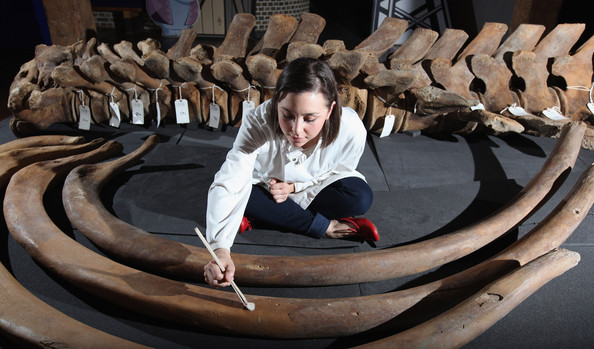A curator hard at work (source of image)
Curators. I should know them.
Guardians of museum collections, curators acquire artefacts and artworks, conduct research, publish articles or books, and mount exhibitions.
Purveyors of specific domains, curators help to seive the wheat from the chaff. With a discerning eye, they distill the key essences of their subjects – be it Singapore history, Renaissance art, or tropical ferns.
In the social age, curation is no longer an academic discipline restricted to the arts or sciences. Rather, it has now become mainstream. The only thing is that the way curation is perceived differs significantly from what it used to be in the past.
Curated Consumption
Consider the rise of curated consumption.
With ubiquitous social networks and 24/7 content on gazillion channels, consumers need help.
Trendy tastemakers and opinion leaders show the best way forward, exerting tremendous influence on the buying and consumption choices of their readers, viewers, and listeners.
Curated Content
Beyond goods and services, we also consume information curated by influencers on social media platforms.
We follow these folks because we enjoy their handpicked content. We nod our heads at insightful blog posts, laugh out loud at a humorous YouTube video, or sob quietly when we read a touching real life story.
Curated Experiences
Experiences can also be curated.
If you think about it, travel itineraries are attempts at curating one’s vacation with things to see, hear, feel and taste.
Most good events – from product launches, conferences, exhibitions, award ceremonies, to dance competitions and “getai” performances – are curated ones. Each of them have multiple different moving parts that are pieced together to provide an integrated experience.
Can Curation Work For Businesses?
The question, however, is this: how can curation be done well for any business?
Good curation – be it in museums, movies, or malls – are embodied by the 5 Rs. These are Research, Realism, Rituals, Relevance and Reaction.
Research
The first and perhaps most important discipline is research.
Museum curators spend a lot of time delving deep into their subjects. They conduct interviews with scholars, pore over volumes of historical records, and collect artefacts and artworks to tell the story.
As gatekeepers of knowledge and seekers of the truth, curators spare no effort in digging through the past while envisioning the future.
Similarly, businesses should make it a point to study where they are at. Spend time, energy and money to truly understand your market and audiences. Delve into the dynamics of what makes customers tick, and probe deep into the psyches of the competition.
Realism
Once the initial scripts and storyboards are established, curators would look at ways to embellish the experience to make it compelling. Depending on the subject matter and available budgets, physical environments would be transformed into “experience scapes” that are immersive, hyper-realistic and memorable.
Here, the sensory elements – sight, sound, scent, taste and touch – are blended with enchanting narratives to bring the past (or the future) to life.
Likewise, businesses should consider their retail environments and how these should be shaped.
Invest in a good design and atmospherics that convey authenticity, quality and magic. Pay attention to “eyesores” and inappropriate noises that distract rather than attract. Think of your outlet as a “stage” with “props” where staff and customers are “actors” interacting with one another.
Rituals
We are all creatures of habit. This is embodied in the various rituals that we undertake, day in and day out. From celebrating a win or a promotion, to dining out with loved ones during their birthdays, to giving each other blessings of money in the form of red packets during Chinese New Year.
Curators of museums or businesses should also consider these time-honoured traditions. Create an encounter that has the warmth and familiarity of a relished memory, while taking your audiences or customers through a journey.
Relevance
The next R or Relevance is an important one. Any subject or theme which you choose needs to be understood and appreciated by your target audiences.
This is why universal themes like love, success, anniversaries, surprise, and adventure are so successfully employed in various forms of storytelling.
To be relevant, you also need to understand your zeitgeist – the spirit, attitude, or general outlook of a specific time or period. Find out how you can interpret and translate your subject matter to something which your stakeholders will care about. This would naturally require sufficient research and testing of ideas and concepts.
Reaction
Finally, any curated work must be able to elicit a response from its audiences. It needs to engage the emotions and stir the heart of its consumers while making them sit up and notice. It needs to deliver an “Aha!” moment – one which makes it stand out in a massive sea of lookalikes.
To achieve a positive reaction, you need to find ways to make your content unique and special while balancing the need for some familiarity and recognition. This isn’t easy of course.
Perhaps the only way to gauge if your idea will sizzle or fizzle is to bring it out to the market. Test what your customer’s reactions are, and study their behaviours. From there, you should make the necessary changes to your product so that it can dazzle and delight your customers.
Are there other “Rs” in curation that we can consider?

